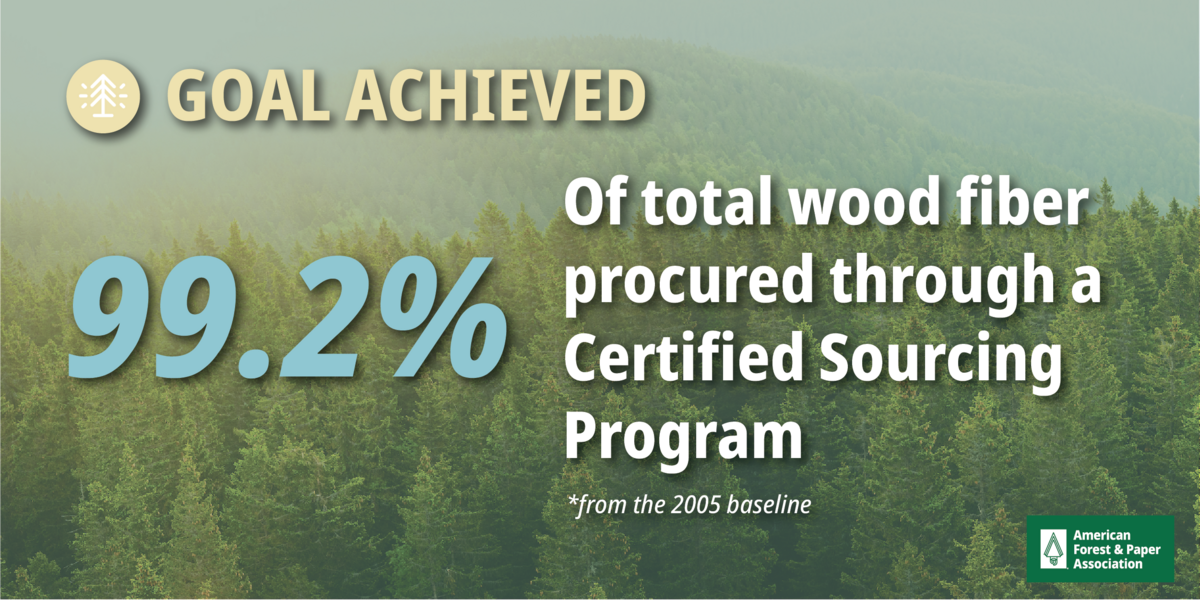How the Paper Industry Champions Sustainable Forestry
The paper and wood products industry is a leader in promoting sustainable forest management. As a condition of membership, AF&PA members are committed to sustainable forest management and sourcing wood from responsibly managed forests.
Today, U.S. forests are strong. More than 1 billion trees are planted each year in the U.S. One-third of the U.S. is forested, totaling nearly 766 million acres.
Let’s dive into how the paper industry supports sustainable and healthy forests through management best practices.
Where Does the Paper Industry Get its Trees?

The paper industry uses trees from healthy, managed working forests where harvesting of trees is permitted. We source our trees from 2 types of working forests:
- Private Working Forests
- Public Working Forests
The vast majority of our country’s working forests are on private land. These are owned by individuals, families, small and large businesses. Many of these forests have been in families for generations.
Public working forests include state and federal lands that allow tree harvesting and other commercial activities. Public working forests are not our treasured national parks and preserves – those are what’s called public non-working forests.
90% of the wood that is used to produce the essential paper and wood products that Americans use every day is sourced from private, sustainably managed working forests.
And, only about 2% of working forests are harvested each year.
Are Working Forests Healthy and Sustainably Managed?

Responsible stewardship is crucial to a working forest. Managed working forests have been around for generations, and our business is linked to the future of these trees. A healthy working forest means we’re ensuring our future production and that we’re safeguarding the forest for future generations.
Working forests are carefully and sustainably managed by landowners, foresters, engineers, scientists, and harvest managers. These professionals help take care of the forest to ensure the trees are healthy. They also work to maintain the entire forest ecosystem.
Working forests require thinking long-term. Trees are harvested from working forests on schedules that have been planned out based on the growing cycle. Seedlings are planted to continue the cycle.
We’re not talking about 6 months or even 6 years, but 25-60 years of long-term planning. Careful harvesting and planting ensure healthy forests for decades to come.
In fact, more forestland in the U.S., both working and non-working, is disturbed by natural events like insects, disease and fire than is harvested.
How Does the Paper Industry Source Trees Responsibly?
AF&PA members adhere to sustainable fiber procurement principles. Procurement is how our members get the wood they need to make the products we rely on.
These principles assure the suppliers our members source wood from are committed to sustainable forest management and harvesting practices.
In 2020, AF&PA members procured 99.2% of the total wood fiber from forests that was used to manufacture products through a certified fiber sourcing program.

Sustainable forest management is critical for the future of our nation’s forests. Healthy, managed forests support biodiversity while protecting forestland from disease, insect infestations, invasive species, and wildfires.
Our industry will continue to:
- Support conservation and restoration programs
- Educate about the need for forests
- Promote sustainable forest management practices through certified sourcing programs, forest certification and other means.

Today, we have a 2030 sustainability goal to advance more resilient U.S. forests. It’s part of our Better Practices, Better Planet 2030: Sustainable Products for a Sustainable Future initiative.
Our goal furthers our efforts by enhancing the diverse values forests provide. Things like water, carbon, biodiversity, recreation and forest products.
We’re doing this through:
- Supporting conservation and restoration programs and initiatives
- Engaging in partnerships and investing in research, outreach and education
- Promoting sustainable forest management practices
- Committing to increased supply chain transparency regarding responsible sourcing.
As part of Better Practices, Better Planet 2030, AF&PA members will also continue their commitment to procure wood fiber through certified sourcing.
